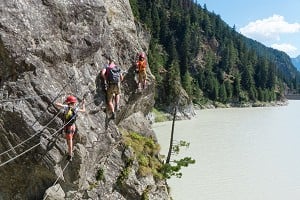
Site user John Tattersall relives a classic hut-to-hut via ferrata tour through the Civetta and Sorapiss groups of the Italian Dolomites.
Sunday afternoon, September. Rifugio Vazzoler 1714m at the southern end of the Civetta group. Cloud down to 2000m and the forecast for the next three days is poor.
After overnight rain we take a chance and go for Via Ferrata (VF) Attilio Tissi hoping to reach the summit of the Civetta. A relentless three and a half hours uphill finds the start of the ferrata with the upper sections disappearing in grey uninviting cloud. After an hour of wet and sometimes slippery climbing in poor visibility the cable runs out onto a slope covered in fresh soft snow. We cross the slope hoping to find waymarks despite the mist. Relief comes with a large red arrow pointing the way up an outcrop and ten minutes later we find ourselves on a helipad. More wandering around finds waymarks to Rifugio Torrani 2984m surprisingly complete with warden this late in the season. The stunning views are taking the day off.
"Over dinner my gaze falls on a large grainy black and white photograph of a mountain wall. A closer look reveals several tiny figures almost lost against the background gingerly traversing the wall along a ledge. Our route tomorrow"
We decide to give the summit a miss. The guide book says it's another 236m of height gain over steep and friable rock with the west face waiting if we don't stop in time. Which way back then? The choice is Via Normale or slip our way back down the ferrata. The Via Normale takes an hour longer and involves losing and regaining an additional 250m. So it's back down the ferrata then. After an eight hour day and 1400m of ascent we're back at Rifugio Vazzoler for the night having seen no one other than the warden at Rifugio Torrani.
Two days of displacement activity follow - walks only to the other rifugios around the Civetta testing our waterproof gear. Dusting of fresh snow down to 2500m.
Wednesday evening Rifugio Tissi 2250m. Feeding time at the zoo. Time to consider the meteo and plan what we do next. Tim, the hutte meister, is tucking away everything put in front of him whilst I pick at the food failing to finish. Tim declares himself a trencherman and chides me for not consuming all calories on offer.
The meteo promises two days of fine weather over Saturday and Sunday. Trencherman produces his mopping up list. The Sorapiss circuit southeast of Cortina is the obvious choice. Not heard of that one? OK it's not Serie A but it's a two day circuit, it's all new ground for us and the guidebook describes it as a classic mountain round.
A Friday afternoon stroll in the dry up to Rifugio Vandelli 1926m. Our host shows us to a nine-bed room on the second floor and announces "solo". Not only do we have the room and the floor to ourselves but also a WC (not a primitivo) and two washbasins opposite the room. That counts as en suite. Trust me, this is remarkable.
Over dinner my gaze falls on a large grainy black and white photograph of a mountain wall. A closer look reveals several tiny figures almost lost against the background gingerly traversing the wall along a ledge. The photo carries the legend "Percoso Attrezato Berti". Our route tomorrow. Tim dines heartily. I do my best, not wishing to offend chef, but still leave enough to earn a reproachful look from Trencherman. Outside it's cold and clear and the Milky Way fills the night sky. I turn in first. A late arrival, a wiry Italian with the build of a fell runner is taking a bed in our room. He speaks English and I ask if he intends like us to complete the giro. "No" he replies, "I am nearly 50 years old and it is too long." No hope for us then.
A workmanlike start at 0800 hours under a cloudless blue sky. We pass the beguiling turquoise Lago di Sorapiss to an hour long push up a glacial moraine. It's no effort. We are in the cool shade of the Circo del Sorapiss and the stunning views are on duty. Into the sunlight and the strikingly beautiful steep sided valley Tondi di Sorapiss. A group of chamois crosses the slabby slopes above us without disturbing the silence. No one has followed us up into this hanging valley and we see no one in front. This is sublime.
"An hour or more of unprotected exposure and a short burst of stonefall demand all our care and attention"
A scramble up several rock steps leads to Forcella Sora Cengia del Banco 2416m and a sudden plunging view down to the Cadore valley. An outward sloping scree shelf runs across the west facing walls of the Sorapiss group 1300m above the valley floor. The path contours along the scree shelf underneath the walls. Lids on but not the harness and VF kit, there is no cable to clip. An hour or more of unprotected exposure and a short burst of stonefall demand all our care and attention. Serie A mountains Pelmo and Civetta dominate the view to the south west.
It's a relief to reach the start of VF Francesco Berti and put on our gear. Progress attached to the cable is relaxing in comparison to the loose scree path. The ferrata route rambles up, down and across, sometimes protected sometimes not. Another hour passes until cable and ladder pitches alternate finishing along a ledge leading up to Forcella delle Bivacco (2870m).
Three groups are at the Forcella but only one, having watched our upward progress closely, seems intent on going down the ferrata. They are Italians, two male one female. The senora is having difficulty putting on her harness, not helped by the fact it is the full body type. One of the senore assists. We can't help but watch. He is so attentive. Several minutes later it's on but he is unhappy with the result. The harness must be removed, with his help of course, and the process starts again with both senore lending a hand. I lapse into lewd comment. At the second attempt all is well and they set off down bidding us a cheerful "Ciao".
Bivacco Slataper is 10 minutes away but we've opted to spend the night in the comfort of Rifugio San Marco (1823m) at a cost of two hours and 1100 m of descent. Even with walking poles the last 400m of height loss is hard on my knees. Tim forges ahead. This is no time for comradeship. It's Saturday and the hutte meister's policy is to book in advance and arrive early to claim a decent bunk before the weekenders. Eight hours or so after leaving Rifugio Vandelli and a least twenty minutes behind Tim I stride manfully on to the terrace as if there is still plenty left in the tank and beam at the occupants. Fortunately most of the descent path is not visible from the terrace. Tim gives me a radler and the good news that we both have lower deck bunks by a window. All is well with the world.
Refreshment restores the ability to think so I ask Tim if there is a shower. He reports that the guardian claims not only a shower but also hot water and no charge. This has to be checked out sharpish before other guests find out. The guardian points us 50m back up the path where, set back by a shed housing the generator, we find two al fresco showers offering a clear view of the path. Don't mistake me for someone who cares.
Ten minutes later I'm occupying a sun lounger catching the last of the late afternoon rays, drinking a weissbier, texting home surrounded by a hen party of nine young Italian lasses. No personal magnetism involved. It's the last spot to lose the sun.
Dinner that evening confirms the 40 bed rifugio to be fully occupied. An earlier recce has found only two facilities, one being a primitivo. Ominously the hen party occupies the dorm next to the facilities. Tomorrow will be a nine hour day and an early start is necessary to get in front of the weekenders.
I'm already awake before my 0600 alarm goes off. Our fellow guests remain in their bunks and we are not delayed. By 0620 I've repacked my rucksac and vacated the dorm. Downstairs the guardian is waiting for early risers and switches on the lights. I pay our bill and Tim joins me for early breakfast. By 0715 we are on our way back up yesterday's path. Textbook.
It's 450m back up to Forcella Grande (2255m) in cool morning shade. Blue sky promises another top drawer day. From the Forcella an exposed path heads east to Sentiero Carlo Minazio.
The Sentiero gets a 1C grade but after yesterday's exposed unprotected path we don't feel the need to clip on. It's absorbing but not serious allowing the views to be taken in at the same time. We are on the Sentiero for three hours and towards the end we stand aside to let a younger, faster party of four past. Three lads, and a lass looking less than happy.
"Soon after starting down it becomes clear this is a long, rambling Cook's tour down an impressive wall. Pavey Arc on steroids. The protection is intermittent. Time to get a grip"
We play out our own version of the tortoise and the hare as they take breaks and we plod on. At Bivacco Comici we catch them again. The lass has taken off her top to cool down. One of the boys drapes a protective arm around her bare shoulders. The other two sit some distance away. Again they pass us only to park up in separate camps on a slope below a short rock wall. Their would-be leader urges progress and sets off purposefully up the wall. It's not difficult and he climbs holding his walking poles in one hand. His companions do not follow. He stops and shouts down to them only to be be ignored. Tim and I share a smile at the story being played out.
We still have another three hours to go. After a grind up to Col del Fogo (2360m) we reach the start of VF Alfonso Vandelli with the rifugio and Lago di Sorapiss in view a long way below. The young Italians are here but on our arrival they scamper off down the ferrata. We've been moving for seven hours so lunch is called for. A short rest before the next stage that I imagine will be an enjoyable down-climb of about an hour. To save weight the guidebook didn't make it on the trip so we can't read up and savour.
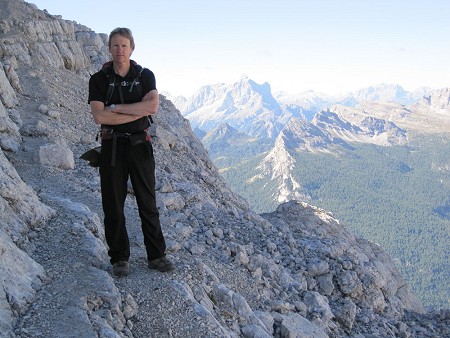
How wrong can I be? Soon after starting down it becomes clear this is a long, rambling Cook's tour down an impressive wall. Pavey Arc on steroids. The protection is intermittent. Time to get a grip but I'm tired and unable to concentrate fully. I just want it over with. On and on we go. Perhaps around the half way point the cable tires of traversing and disappears decidedly downwards out of sight. Nothing for it but to clip in and follow. A couple of moves are needed with my backside over a long drop to the valley floor. The cable is tight up to the rock and clipping past a bolt I fail to properly attach one carabiner to the cable. The rock must have prevented the gate from fully closing. I don't realise until my downward movement pulls it off the cable. I reclip properly and give myself a good talking to. On again.
Two hours later we are safely down on the scree. We haven't spoken the whole way.
Our return to Rifugio Vandelli is a triumph. We have the same room solo. The warden grants free hot showers by supplying half a dozen or so jetons (tokens) gratis. Dinner is memorable. Our host has a notepad headed "2 Inglese" on which to write down our order. Perhaps we have achieved hut mascot status and will have a table named in our honour "Tavoli due Inglese". We must be eating up stocks before the rifugio closes for the winter as three enormous courses plus bread and a litre of wine follow. In the morning Tim pays the bill. No charge for beer or wine. Postcards thrown in. €80 the lot. Rain has returned and it will be a damp walk back to the car. I've had the best two days in the mountains of my life.
Logistics
When to Go
Though it is possible to complete climbs during the winter months (some of the via ferrata make for excellent ski tours) generally speaking the best season runs from June to the start of October. However at the beginning of the season there is often still a lot of snow about and it is usually necessary to seek lower altitude south facing routes.
Lifts
Most of the lifts open around the third week of June and close in mid September, but it is worth contacting the local tourist offices for exact information if you are planning on using specific lifts during your trip.
How to Get There
The Dolomites are easily accessible from three airports all a similar distance away. Innsbruck is the closest airport within 2 hours driving distance of the Sella over the Brenner Pass. Cars can be hired from the airport from a number of different companies. Venice Marco Polo is the other main airport within 2 and a half hours drive from the Sella. There are again a number of car hire companies. Alternatively there are several public transport options from Venice; a direct bus runs throughout high season from Venice to the villages surrounding the Sella, or alternatively a more frequent train service runs to Belluno, from where it is then possible to catch a number of buses.
Treviso airport though only small is actually 15 minutes closer than Venice if you can get a flight there. Public transport is available to the centre of Treviso or into Venice, and then you can take a train / bus as above.
Alternatively it is possible to drive from the UK via Germany and Belgium before approaching the Dolomites from the North entering at Pedraces (recently renamed Badia). I usually stay in a hotel near Munich and do the trip in two days.
Hire cars are expensive, around £150 per week. BMC members can get a discount through Hertz.
Accommodation Advertise here
No Premier Listings found in this area
The towns of Arabba, Canazei, Cortina, Corvara, Colfasco, La Ville, Pedraces and Selva are all good locations from which to reach the popular climbing areas. Camping is available in both Colfosco, Cortina and Canazei, and hotels can be found in all of the towns. UKC regular Mike Kann is very knowledgeable about the area and runs a nice set of apartments near the Marmolada.
Gear
There are a lot of outdoor shops in any decent sized town. The best are:
Sportler - Treviso - A huge complex and only 2km from the airport there.
K2 - Cortina - A small but fantastic gear shop.
Sport Amplatz - Canazei - One of the best shops in the area.
Sport Kostner - Corvara - A good shop with attatched super-market.
Outdoor Shops Advertise here
No Premier Listings found in this area
Instructor/Guides Advertise here
Other Activities
There is climbing and walking, the zipwire at Kronplatz (supposed to be the longest in Europe), a high ropes course at Colfosco, horse riding is becoming increasingly popular, as is mountain biking, there is also white water rafting at Brunico, canyoning at Cortina.
Road biking has long been an integral part of the Dolomite mountains and numerous prestigious races take place up the winding and tortuous passes. Apart from the Giro d'Italia, which usually passes through parts of the Dolomites and in particular often features a famous stage by the Tre Cime, the Sella Ronda and the Maratona dles Dolomites see thousands of cyclists taking to the passes.
Wet Weather Options
One of the most relaxing wet weather options is taking advantage of the many spa facilities in the boutique hotels. Many of these are open to non-residents and are an indulgent way to rest aching muscles and generally get pampered.
There are numerous cultural options with excellent museums such as the Messner Mountain Museum in Brunico, the South Tyrolean Museum of Archeology - home of Otzi the ice man - in Bolzano, and the two Ladin museums in San Martino in Badia and San Cassiano. The three Regole di Cortina museums - Paleontology, Ethnography and Modern Art - offer interesting insights into the history of the rocks themselves and the heritage of the people who lived around them.
Anyone with an interest in more recent history may be interested in the First World War Museum at the Tre Sassi Fort on the Valparola Pass or at the Marmolada mid station.



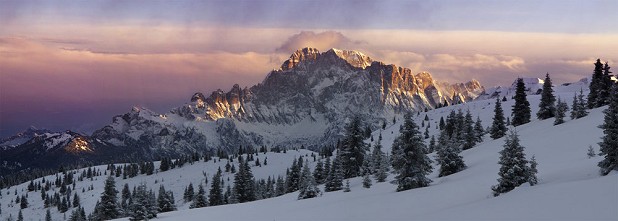
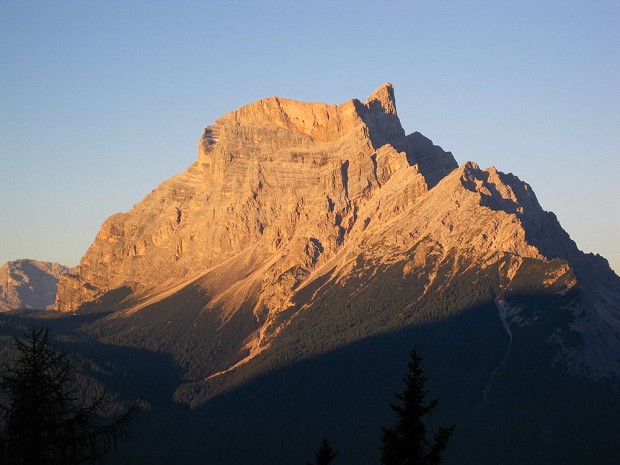
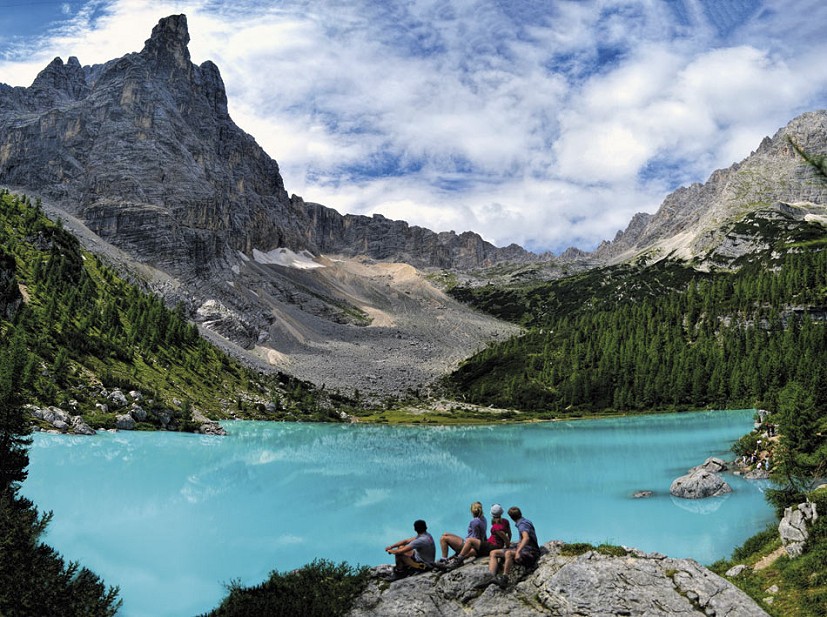
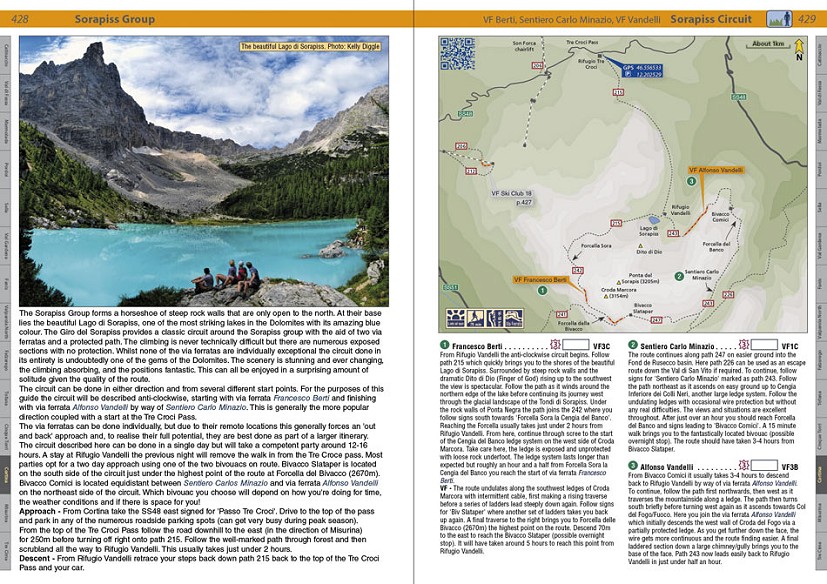


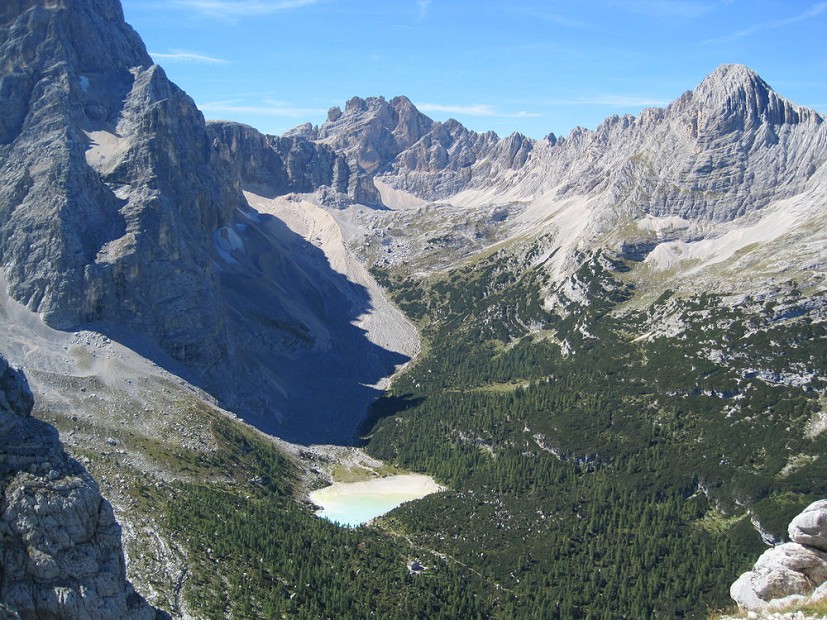
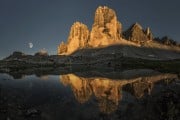

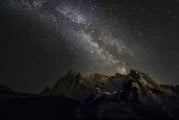
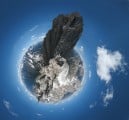
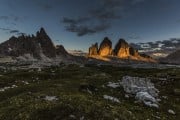

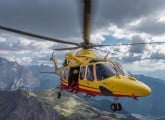

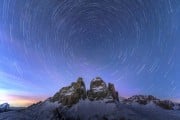
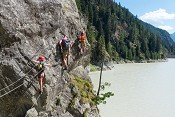
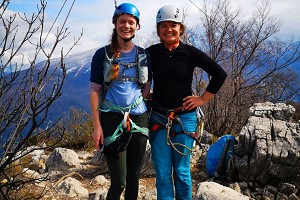
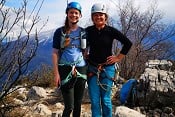
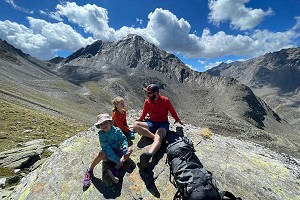
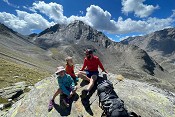


Comments